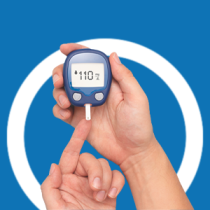For many years, we have been reminded that men need to look after their heart health because they are prone to heart attacks, high blood pressure and high cholesterol. The danger of this kind of description is that it led to the idea that women did not encounter these problems. The reality is that, at the time, it was simply that women seemed to have their coronary events later in life.
However, even that is starting to change. As women share in more of the social and economic practices that contribute to heart disease, we are seeing a rise in the different varieties of heart disease, and they are starting earlier.
Cardiovascular Disease
There are multiple kinds of heart disease, referred to as “Cardiovascular Disease” or CVD, and they are all dangerous because of our bodies’ dependence on a strong and healthy heartbeat. They include heart attacks, strokes, ischemic strokes, and haemorrhagic strokes that are a result of heart failure.
There are many causes of these heart problems. We hear about them often, but we don’t always think about how choosing to avoid these causes would change the way we live.
We know that high blood pressure or hypertension is the biggest single risk factor for CVD. We know that harmful eating habits, obesity, lack of physical activity and high alcohol intake all cause high blood pressure. But how many of us do anything about it?
It’s easy to think that if you aren’t part of the “high risk group”, then you’re part of the “no risk group”. This is not the case. Especially with heart disease. It would be safer to assume that if you have a heart, you’re part of the risk group for heart disease.
The Heart is complicated.
The heart is a complicated organ. Made of a muscular framework that is incredibly strong, there are nerves and valves that allow this muscle to pump a rough average of five litres of blood around the adult human body. If you live to 90, your heart will have done this around 3 billion times during your life.
The pumping of blood is how the oxygen in the air we breathe and the nutrients in the food we eat make it to every part of us. A complex map of vessels carries blood all the way from our heart to our head, to our fingers to our toes, keeping our bodies nourished and healthy. If this pump breaks down, the body effectively starves to death. If blood stops reaching the brain, the brain will die and then all the organs start to shut down, unless you are put on artificial life support.
This is the real danger with cardiovascular diseases. If any single part of this network starts to struggle, it affects the entire system. Even if it starts slowly, it can start to affect one organ after the other, which accelerates the destruction.
The different kinds of heart disease affect the different parts of this system, which is why they are ALL a risk. Whether it is the veins, the arteries, the heart muscle, the heart nerves or heart valves, you have to look after the whole thing!
His & Hers Cardiovascular Health
When much of the media was focused on it being men who were more at risk of heart disease, it was also a product of the distinct gender roles that men and women had in society. As the distinctions start to fade over time, the reality that humans are humans, and that we will all suffer similarly in the same situations is becoming clear. Managing this reality is up to us. Maintaining the advancements and ensuring we’re all still around to appreciate them is key. That is why we need to take risks to our Heart Health seriously.
- Do not wait. It’s never too early to start making changes to your life to support your heart.
- Be consistent. Make changes that stick.
- Get checked. With heart disease it can seem just fine until you’re dead.
- Keep active. Sitting still most days? Try and balance it out with walking or running.
- Be aware of what you eat. Salt and Cholesterol are top contributors to heart disease.
- Cigarettes and Alcohol. Quit smoking yes, even vaping, and moderate your drinking.
With Solace, you’re not alone
Contact us for more information:




